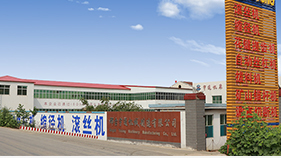
-
 Afrikaans
Afrikaans -
 Albanian
Albanian -
 Amharic
Amharic -
 Arabic
Arabic -
 Armenian
Armenian -
 Azerbaijani
Azerbaijani -
 Basque
Basque -
 Belarusian
Belarusian -
 Bengali
Bengali -
 Bosnian
Bosnian -
 Bulgarian
Bulgarian -
 Catalan
Catalan -
 Cebuano
Cebuano -
 Corsican
Corsican -
 Croatian
Croatian -
 Czech
Czech -
 Danish
Danish -
 Dutch
Dutch -
 English
English -
 Esperanto
Esperanto -
 Estonian
Estonian -
 Finnish
Finnish -
 French
French -
 Frisian
Frisian -
 Galician
Galician -
 Georgian
Georgian -
 German
German -
 Greek
Greek -
 Gujarati
Gujarati -
 Haitian Creole
Haitian Creole -
 hausa
hausa -
 hawaiian
hawaiian -
 Hebrew
Hebrew -
 Hindi
Hindi -
 Miao
Miao -
 Hungarian
Hungarian -
 Icelandic
Icelandic -
 igbo
igbo -
 Indonesian
Indonesian -
 irish
irish -
 Italian
Italian -
 Japanese
Japanese -
 Javanese
Javanese -
 Kannada
Kannada -
 kazakh
kazakh -
 Khmer
Khmer -
 Rwandese
Rwandese -
 Korean
Korean -
 Kurdish
Kurdish -
 Kyrgyz
Kyrgyz -
 Lao
Lao -
 Latin
Latin -
 Latvian
Latvian -
 Lithuanian
Lithuanian -
 Luxembourgish
Luxembourgish -
 Macedonian
Macedonian -
 Malgashi
Malgashi -
 Malay
Malay -
 Malayalam
Malayalam -
 Maltese
Maltese -
 Maori
Maori -
 Marathi
Marathi -
 Mongolian
Mongolian -
 Myanmar
Myanmar -
 Nepali
Nepali -
 Norwegian
Norwegian -
 Norwegian
Norwegian -
 Occitan
Occitan -
 Pashto
Pashto -
 Persian
Persian -
 Polish
Polish -
 Portuguese
Portuguese -
 Punjabi
Punjabi -
 Romanian
Romanian -
 Russian
Russian -
 Samoan
Samoan -
 Scottish Gaelic
Scottish Gaelic -
 Serbian
Serbian -
 Sesotho
Sesotho -
 Shona
Shona -
 Sindhi
Sindhi -
 Sinhala
Sinhala -
 Slovak
Slovak -
 Slovenian
Slovenian -
 Somali
Somali -
 Spanish
Spanish -
 Sundanese
Sundanese -
 Swahili
Swahili -
 Swedish
Swedish -
 Tagalog
Tagalog -
 Tajik
Tajik -
 Tamil
Tamil -
 Tatar
Tatar -
 Telugu
Telugu -
 Thai
Thai -
 Turkish
Turkish -
 Turkmen
Turkmen -
 Ukrainian
Ukrainian -
 Urdu
Urdu -
 Uighur
Uighur -
 Uzbek
Uzbek -
 Vietnamese
Vietnamese -
 Welsh
Welsh -
 Bantu
Bantu -
 Yiddish
Yiddish -
 Yoruba
Yoruba -
 Zulu
Zulu
Exploring HS Code for Thread Rolling Machine Exporters and Market Opportunities
Exploring the HS Code for Thread Rolling Machine Exporters
Thread rolling machines are essential equipment in various manufacturing industries, particularly in the production of fasteners and precision components. These machines use specialized techniques to form threads on metal workpieces through rolling rather than cutting, which enhances the mechanical properties of the threads and improves efficiency. As global trade continues to expand, understanding the Harmonized System (HS) code for thread rolling machines becomes crucial for exporters navigating international markets.
The Harmonized System, established by the World Customs Organization (WCO), is a standardized numerical method of classifying traded products. Each item is assigned an HS code, which facilitates international trade by providing a uniform language for customs procedures and tariff rates. For exporters of thread rolling machines, identifying the correct HS code is essential not only for compliance with trade regulations but also for optimizing tariffs and ensuring smooth customs clearance.
Exploring the HS Code for Thread Rolling Machine Exporters
For exporters, correctly classifying their products is critical. Misclassification can lead to delays, extra tariffs, and other complications in the export process. It’s advisable for manufacturers to consult with a customs expert or use available resources provided by international trade organizations to ensure they are using the correct HS code. Furthermore, as trade policies and customs regulations frequently change, staying updated on these changes can help exporters avoid potential pitfalls.
thread rolling machine hs code exporters

In addition to compliance, understanding the HS code system allows thread rolling machine exporters to better assess their market opportunities. Different countries may impose varying tariffs on machinery classified under different HS codes, which can influence pricing strategies and competitiveness in foreign markets. Exporters can analyze these tariffs and craft strategies to mitigate costs, such as exploring free trade agreements (FTAs) or leveraging duty exemptions in specific regions.
Moreover, awareness of global market trends is vital for exporters in this niche segment. The demand for thread rolling machines is influenced by trends in industries such as automotive, aerospace, electronics, and construction. As these sectors adopt new technologies and manufacturing techniques, the need for precision and efficiency in fastener production continues to grow, driving up the demand for advanced thread rolling machines.
Networking within industry associations, attending trade shows, and participating in international exhibitions can also provide valuable insights into market dynamics and competitor strategies. By engaging with potential customers and partners globally, exporters can better position themselves and tailor their offerings according to regional market demands.
In conclusion, the export of thread rolling machines is a complex but rewarding endeavor. By understanding the importance of accurately classifying their products with the correct HS code, manufacturers can navigate trade regulations more effectively, optimize their operations, and enhance their competitive edge in international markets. With the right strategies, thread rolling machine exporters can not only meet global demands but also drive innovation in the manufacturing industry.
